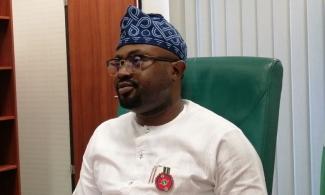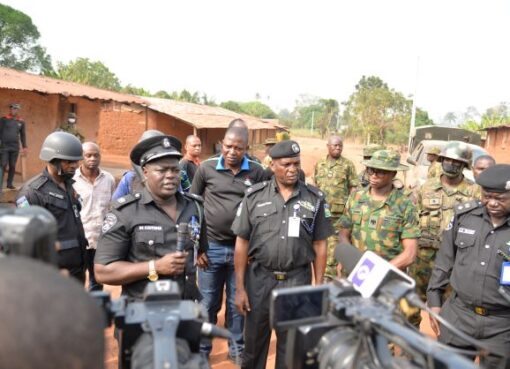A draft of the new Nuclear Posture Review (NPR) was presented in September at a White House meeting between Donald Trump and his top national security advisers. Congress and US allies have been briefed on the progress of the new draft.
The document is still being debated with a target for completion by the end of this year or the beginning of next. Among the new elements under consideration are a low-yield warhead for a ballistic missile intended primarily to deter Russia’s use of a small nuclear weapon in a war over the Baltic states; a sea-launched cruise missile; a change in language governing conditions in which the US would use nuclear weapons; and investments aimed at reducing the time it would take the US to prepare a nuclear test.
Trump has frequently voiced his intention to build up the US arsenal. According to one report, he was outraged at a meeting with military leaders in July when he was shown a downward sloping graph of the US weapons stockpile since the cold war, and had to be talked out of ordering a tenfold increase.
The White House denied the report but it has repeatedly made clear it aims to adopt a more aggressive nuclear stance.
“You can … be assured that our administration is committed to strengthen and modernise America’s nuclear deterrent,” Mike Pence, the vice-president, said on Friday on a morale-boosting visit to Minot air force base in North Dakota, home to Minuteman III intercontinental ballistic missiles and B-52 strategic bombers.
“History attests the surest path to peace is through American strength. There’s no greater element of American strength, there’s no greater force for peace in the world than the United States nuclear arsenal.”
Like much else about Trump’s presidency, the new policy is aimed at erasing the legacy of his predecessor. Barack Obama began his administration with a major speech in Prague in April 2009, committing the US to disarmament and the eventual elimination of nuclear weapons globally.
A year after the speech, the US and Russia signed the New Start agreement, restricting both sides to 1,550 deployed strategic warheads and bombs, down by about 30% from previously agreed limits.
However, the “Prague agenda” petered out. Aspirations to cut the strategic stockpile by another third, unilaterally if necessary, were abandoned in the face of congressional resistance, North Korea’s growing nuclear weapons programme and worsening relations with Russia.
In February, Russia was reported to have deployed a new ground-launched cruise missile that the US said violated the Intermediate-Range Nuclear Forces (INF) Treaty signed in 1987 with the aim of reversing the nuclear buildup in Europe.
The alleged violation brought calls from defence hawks for the US to respond in kind. Trump officials present it as yet another sign of the failure of Obama’s policies.
On Thursday, Christopher Ford, special assistant to the president on weapons of mass destruction and counterproliferation, told a meeting on nuclear threats organised by the Ploughshares Fund: “The traditional post-cold war approach of seeking to demonstrate disarmament bona fides by showing steady numerical movement towards elimination, while trying to avoid steps that could actually undermine US national security, has largely run its course and is no longer tenable, especially given evolving security conditions.
“So it’s time to explore alternative approaches – and we are.”
Ford did not provide further details, as he said the NPR was still being worked on. Several sources briefed on its progress said elements under consideration include:
A low-yield warhead for a ballistic missile, possibly using the Trident D5 missile but using only the first, fission, part of its two-stage warhead.
Bringing back nuclear Tomahawk sea-launched cruise missiles, which were dropped from the arsenal in 2013.
Reducing the lead time the US would need to resume nuclear testing from its current level of three years.
A relaxation of constraints laid down in Obama’s 2010 NPR, which pledged the US would only used its nuclear weapons in “extreme circumstances to defend the vital interests of the United States or its allies and partners” and never against non-weapons states in compliance with their non-proliferation obligations.
Any change in the US arsenal would have to be approved by Congress, which controls the funding for the nuclear weapons programme and which is already concerned that its ballooning cost is eating away at conventional capabilities.
The Congressional Budget Office is expected to issue a new report on Tuesday that would revise cost estimates for the nuclear weapon modernisation programme approved by Obama from $1tn to $1.25tn over the next three decades.
“We never really knew where the money was coming from and now it is even less clear,” said Jon Wolfsthal, who was senior director for arms control and nonproliferation in the Obama White House.
There will also be particular resistance to anything in Trump’s NPR, like the low-yield missile, that is seen as a representing a new nuclear capability.
On the grounds that any such innovations risks setting off a new arms race, the Obama administration enshrined a bipartisan consensus on what were called the “three nos” of weapons doctrine: no new nuclear warheads, no new military missions, and no new military capabilities for existing weapons.
Some critics argued that some enhancements made to US weapons in the Obama era were in a grey area. Adam Mount, a nuclear weapons expert at the Federation of American Scientists, said the developments under consideration by the Trump administration go much further.
Mount said: “When a new procurement plan affords US strategists new options, that’s when it starts to transform the arsenal, and that’s when it takes us on the road to an arms race.”






